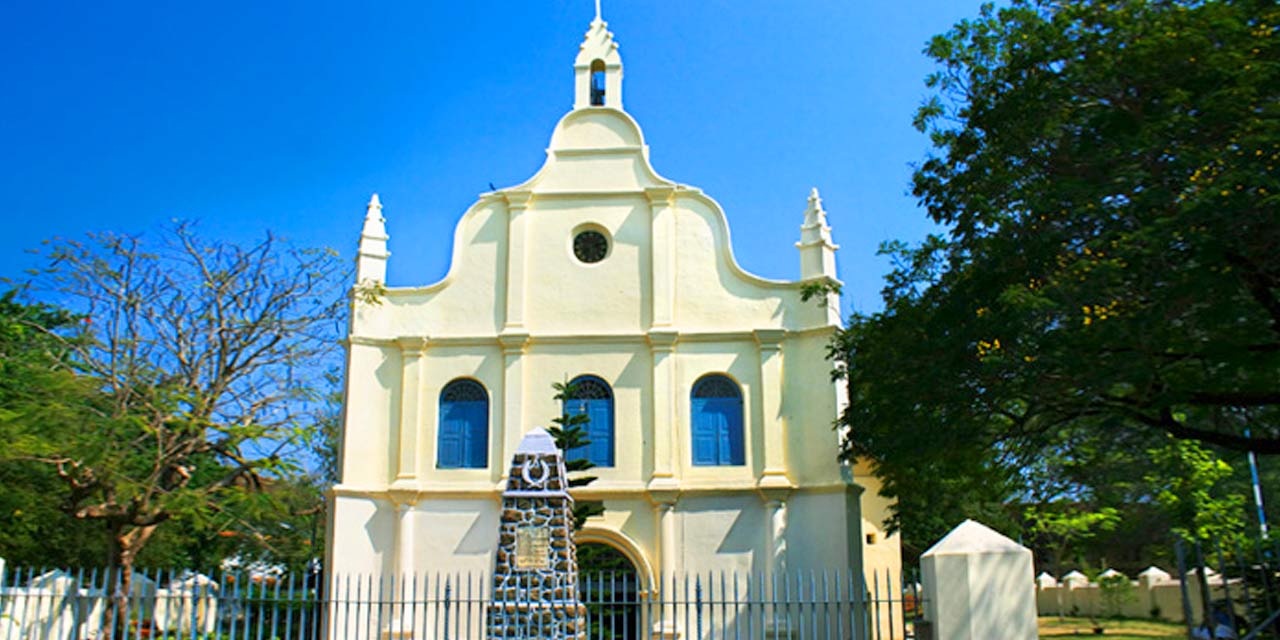St. Francis Church, located in the charming coastal town of Fort Kochi (formerly Fort Cochin) in Kerala, India, is a place of historical significance and spiritual resonance. This centuries-old church stands as a witness to the region’s colonial past and holds a special place in the hearts of the faithful and history enthusiasts alike. In this article, we will explore the captivating history and cultural importance of St. Francis Church.
Historical Legacy
St. Francis Church boasts a history that is deeply intertwined with the colonial era of India:
- Portuguese Origins: The church’s foundation dates back to 1503 when it was originally constructed by the Portuguese Franciscan friars. It is believed to be one of the oldest European-built churches in India.
- Dutch Control: Over the years, the church underwent transitions in ownership. In 1663, the Dutch took control of Cochin, and the church came under their administration.
- British Period: With the signing of the Treaty of Munster in 1814, the church was returned to the British, who had gained control over Cochin. It was during this time that the church was dedicated to St. Francis, a change from its original name.
Architectural Grandeur
The architectural features of St. Francis Church are a testament to its historical significance:
- Gothic Style: The church is constructed in the Gothic architectural style, characterized by pointed arches, ribbed vaults, and flying buttresses.
- Timber Roof: The most distinctive feature of the church is its beautiful timber roof. The roof is made of intricately carved wood and adorned with fine craftsmanship.
- Tombstone: Inside the church, you will find the tombstone of the renowned explorer Vasco da Gama, who passed away in Cochin in 1524. Although his remains were later relocated to Portugal, the tombstone remains as a historical relic.
Visiting St. Francis Church
- Location: St. Francis Church is located in the Fort Kochi area of Kochi (Cochin), Kerala, India. It is easily accessible from various parts of Kochi.
- Entry Fees: Visitors can enter the church free of charge. Donations are appreciated to support the maintenance and preservation of this historical site.
- Photography: Photography is allowed inside the church.
Spiritual Significance
St. Francis Church is not only a historical landmark but also a place of worship:
- Regular Services: The church continues to hold regular services for the local Christian community and visitors.
- Interfaith Harmony: The church stands as a symbol of the coexistence of different faiths and communities in Kerala, where diverse traditions and beliefs have thrived for centuries.
Conservation and Preservation
Efforts are made to conserve and protect St. Francis Church, ensuring that its historical and architectural significance is preserved for future generations.
Conclusion
St. Francis Church, Cochin, is a living testimony to the colonial history of Kerala and the enduring spirit of faith. A visit to this historic church is a journey back in time, where you can marvel at its architectural grandeur, pay homage to the past, and reflect on the cultural amalgamation that defines the region. St. Francis Church invites travelers to explore its rich history, celebrate its enduring faith, and appreciate the historical and spiritual treasures it holds within its hallowed walls.
St. Francis Church, Cochin: Where History and Faith Converge
St. Francis Church, located in the charming coastal town of Fort Kochi (formerly Fort Cochin) in Kerala, India, is a place of historical significance and spiritual resonance. This centuries-old church stands as a witness to the region’s colonial past and holds a special place in the hearts of the faithful and history enthusiasts alike. In this article, we will explore the captivating history and cultural importance of St. Francis Church.
Historical Legacy
St. Francis Church boasts a history that is deeply intertwined with the colonial era of India:
- Portuguese Origins: The church’s foundation dates back to 1503 when it was originally constructed by the Portuguese Franciscan friars. It is believed to be one of the oldest European-built churches in India.
- Dutch Control: Over the years, the church underwent transitions in ownership. In 1663, the Dutch took control of Cochin, and the church came under their administration.
- British Period: With the signing of the Treaty of Munster in 1814, the church was returned to the British, who had gained control over Cochin. It was during this time that the church was dedicated to St. Francis, a change from its original name.
Architectural Grandeur
The architectural features of St. Francis Church are a testament to its historical significance:
- Gothic Style: The church is constructed in the Gothic architectural style, characterized by pointed arches, ribbed vaults, and flying buttresses.
- Timber Roof: The most distinctive feature of the church is its beautiful timber roof. The roof is made of intricately carved wood and adorned with fine craftsmanship.
- Tombstone: Inside the church, you will find the tombstone of the renowned explorer Vasco da Gama, who passed away in Cochin in 1524. Although his remains were later relocated to Portugal, the tombstone remains as a historical relic.
Visiting St. Francis Church
- Location: St. Francis Church is located in the Fort Kochi area of Kochi (Cochin), Kerala, India. It is easily accessible from various parts of Kochi.
- Entry Fees: Visitors can enter the church free of charge. Donations are appreciated to support the maintenance and preservation of this historical site.
- Photography: Photography is allowed inside the church.
Spiritual Significance
St. Francis Church is not only a historical landmark but also a place of worship:
- Regular Services: The church continues to hold regular services for the local Christian community and visitors.
- Interfaith Harmony: The church stands as a symbol of the coexistence of different faiths and communities in Kerala, where diverse traditions and beliefs have thrived for centuries.
Conservation and Preservation
Efforts are made to conserve and protect St. Francis Church, ensuring that its historical and architectural significance is preserved for future generations.
Conclusion
St. Francis Church, Cochin, is a living testimony to the colonial history of Kerala and the enduring spirit of faith. A visit to this historic church is a journey back in time, where you can marvel at its architectural grandeur, pay homage to the past, and reflect on the cultural amalgamation that defines the region. St. Francis Church invites travelers to explore its rich history, celebrate its enduring faith, and appreciate the historical and spiritual treasures it holds within its hallowed walls.

